Can You Sprint After Leg Lengthening Surgery? A Detailed Brief
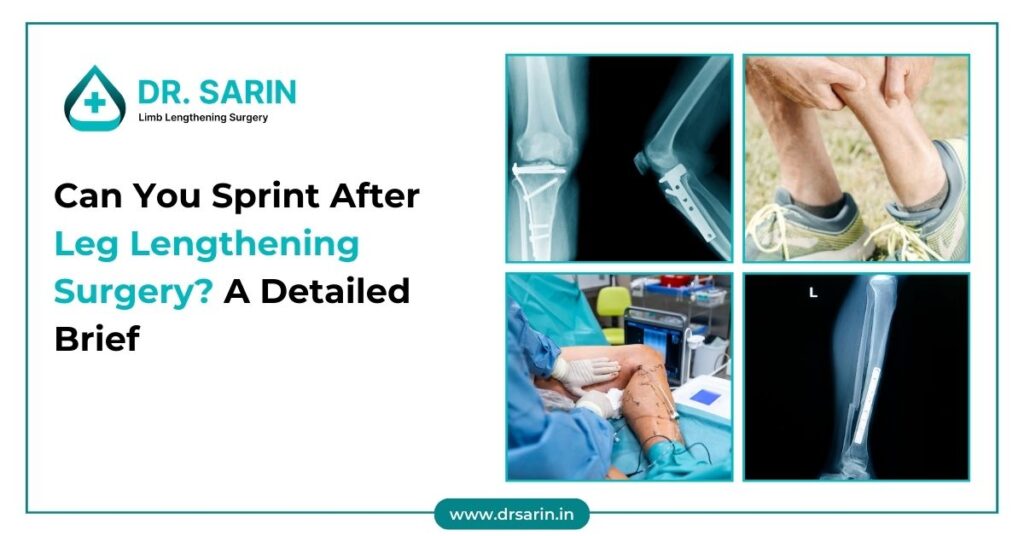
Leg lengthening surgery is a transformative procedure that offers individuals the chance to enhance their stature and correct limb length discrepancies. However, the post-surgery phase requires careful consideration and guidance, especially for those eager to return to high-impact activities like sprinting. Dr. Sarin, a renowned orthopedic surgeon, sheds light on the complexities of this process and offers valuable insights into the journey of resuming sprinting post-leg lengthening surgery. Surgery and Lengthening Process Dr. Sarin explains that leg lengthening surgery involves meticulous planning and precise surgical techniques. Generally, the procedure includes the use of external or internal fixation devices, such as nails or frames, to gradually elongate the bones. Patients undergo a controlled process where the bone is slowly separated, allowing new bone to form in the gap. Bone Consolidation and Recovery Following the surgery, the bone consolidation phase begins. Dr. Sarin emphasizes the importance of patience during this stage as it’s crucial for new bone formation and consolidation. Patients will require regular follow-ups and imaging tests to monitor progress. Factors like nutrition, physical therapy, and adherence to the prescribed regimen significantly influence bone healing. Full Recovery and Returning to Running Recovery timelines vary, but Dr. Sarin highlights that patients can expect a significant portion of their recovery to occur within the first few months post-surgery. However, returning to sprinting or high-impact activities demands a cautious approach. Dr. Sarin advises a gradual reintroduction of physical activity, starting with low-impact exercises and gradually progressing to higher-impact ones under professional guidance. Potential Limitations and Precautions Dr. Sarin stresses that while many patients regain their mobility and lead active lives after leg-lengthening surgery, certain limitations and precautions must be observed. Sprinting or intense physical activities may require a longer timeline for a safe return. It’s essential to prioritize bone strength and stability, following the doctor’s recommendations to prevent setbacks or complications. Conclusion In conclusion, leg lengthening surgery is a transformative procedure that offers hope to those seeking limb correction or stature enhancement. Dr. Sarin’s expertise emphasizes the significance of a structured recovery process. While the desire to return to sprinting post-surgery is understandable, patience and adherence to the prescribed recovery protocols are vital. Patients should consult closely with their medical team, particularly Dr. Sarin, to ensure a safe and successful transition back to high-impact activities.
Long-term Effects Of Limb Lengthening Surgery

Introduction Limb lengthening surgery, a revolutionary medical procedure, aims to increase the length of limbs for various reasons, such as correction of deformities, enhancing stature, or addressing limb length discrepancies. While it offers promising outcomes, understanding its long-term effects is crucial for individuals considering or undergoing this procedure. Understanding the Procedure Surgical Techniques The surgery involves carefully breaking the bone and gradually separating the ends to stimulate new bone growth. This is achieved through external fixation devices or internal implants, allowing controlled bone distraction. Recovery Process Post-surgery, a rigorous rehabilitation process commences. It includes physical therapy, regular check-ups, and adherence to a personalized recovery plan, ensuring optimal healing and function restoration. Potential Long-term Effects Physical Implications While limb lengthening can offer physical improvements, potential long-term effects may include joint stiffness, muscle weakness, or nerve damage, requiring ongoing management and care. Psychological Impact Addressing the psychological impact is vital. Patients might experience emotional challenges like body image concerns or adjustment difficulties, necessitating psychological support and counseling. Health Considerations Post-Surgery Monitoring and Follow-ups Long-term health considerations involve regular monitoring, imaging assessments, and follow-ups to detect and address any complications promptly. Rehabilitation Programs Structured rehabilitation programs encompassing exercises, adaptive strategies, and lifestyle modifications play a pivotal role in ensuring sustained mobility and function. Managing Long-term Effects Therapies and Treatments Innovative therapies such as regenerative medicine or specialized treatments aim to mitigate long-term complications and improve overall quality of life. Supportive Care Providing holistic care through support groups, educational resources, and access to healthcare professionals ensures a comprehensive approach to managing potential long-term effects. Real-life Experiences Patient narratives offer invaluable insights into the journey post-limb lengthening surgery, highlighting challenges, successes, and coping mechanisms, fostering a supportive community. Research and Medical Advancements Technological Innovations Ongoing advancements in surgical techniques and medical technology continuously refine limb-lengthening procedures, enhancing safety and efficacy. Ongoing Studies Continuous research studies and clinical trials aim to understand further and address long-term implications, fostering better outcomes for patients in the future. Conclusion Limb lengthening surgery offers transformative possibilities but demands a comprehensive understanding of its potential long-term effects. Managing these effects involves a multidisciplinary approach, encompassing medical, rehabilitative, and psychological support to optimize patient outcomes.
Dos and Don’ts Of Exercise and Physical Activity Following Limb Lengthening Surgery
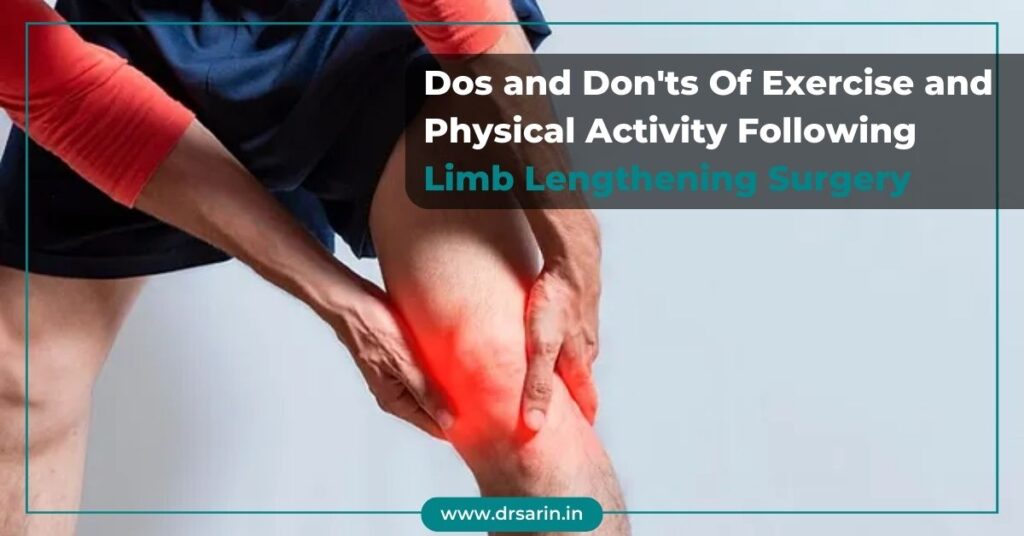
Limb lengthening surgery is a transformative procedure that requires careful consideration during the recovery period and in the postoperative phase. Appropriate exercise and physical activities are crucial for a successful and smooth recovery. This guide will explore the dos and don’ts of exercise and physical activity after limb-lengthening surgery to ensure a safe and effective rehabilitation process. Why Physical Activity Matters After Your Surgery Recovery from limb lengthening surgery involves more than just resting and allowing your body to heal. Physical activity is vital in maintaining overall health, preventing complications, and promoting the proper alignment of the lengthened limb. Engaging in appropriate exercises helps improve blood circulation, reduce muscle stiffness, and enhance joint flexibility. Tailoring Your Physiotherapy, Exercise, and Physical Activity Routine Every individual’s body responds differently to limb-lengthening surgery. Working closely with your healthcare team, including physiotherapists and surgeons, is essential to develop a customized exercise routine that suits your specific needs and limitations. Tailoring your program ensures that you’re addressing your unique recovery requirements. Do’s: Recommended Exercises and Physical Activities to Perform Range of Motion Exercises Gentle range of motion exercises help maintain joint flexibility and prevent stiffness. Controlled movements within your comfort range are essential for promoting healing and preventing complications. Stretching Incorporating stretching exercises helps prevent muscle tightness and promote flexibility. Focus on stretches that target the muscles around the lengthened limb, ensuring a comprehensive and balanced approach. Strengthening Exercises Gradual and controlled strength training is crucial for rebuilding muscle strength and endurance. Targeting both the lengthened and non-lengthened limbs helps maintain balance and stability during recovery. Low-Impact Aerobic Activities Activities like walking, swimming, and stationary cycling are excellent low-impact options. These exercises promote cardiovascular health without putting excessive stress on the healing limb. Social Activities Engaging in social activities that don’t strain the recovering limb is beneficial for mental and emotional well-being. Joining support groups, attending low-impact social events, and staying connected with loved ones positively contribute to recovery. Don’ts: Exercises and Activities to Avoid High-Impact Activities Avoid high-impact exercises such as running, jumping, or activities that generate excessive force on the lengthened limb. These activities can jeopardize the healing process and lead to complications. Heavy Weightlifting Lifting heavy weights places undue stress on the musculoskeletal system. Steer clear of weightlifting routines involving heavy resistance, especially in the initial recovery phases. Overstretching While stretching is beneficial, overstretching can cause harm. Avoid aggressive or extreme stretching that may strain the muscles and joints around the lengthened limb. Always Stay Alert Be mindful of your body’s signals. If you experience pain, discomfort, or unusual sensations during or after an activity, stop immediately and consult your healthcare team. Tips for a Safe and Smooth Recovery Gradual Progression Take a gradual approach to your exercise routine. Gradually increase the intensity and duration of activities as your body becomes more robust and more accustomed to the demands. Listening to Your Body Pay close attention to how your body responds to different exercises. If you feel pain, discomfort, or fatigue, modify or discontinue the activity as needed. Eating Well & Sleeping Well A well-balanced diet and adequate sleep are integral components of the recovery process. Proper nutrition and rest contribute to the body’s healing and recovery mechanisms. Regular Check-ins with Your Physical Therapist Scheduled appointments with your physical therapist are essential for monitoring progress, adjusting exercises, and addressing any concerns or challenges you may encounter during your recovery journey. In conclusion, the dos and don’ts outlined above provide a foundation for a safe and effective recovery after limb lengthening surgery. Remember, each person’s recovery is unique, so always consult your healthcare team for personalized guidance tailored to your situation. A well-structured exercise and physical activity approach can enhance your recovery and help you regain optimal function and mobility.
Bone Recovery Post Limb Lengthening Surgery with Nutrition and Supplements
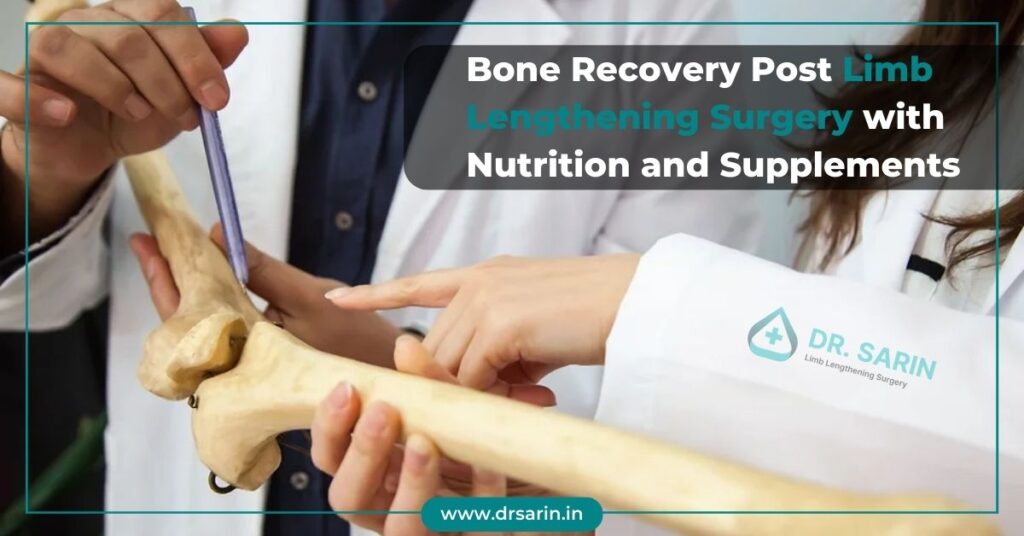
Limb lengthening surgery is a remarkable procedure that offers the possibility of increasing height or correcting limb deformities. However, the success of this surgery doesn’t solely depend on the surgical process; proper bone recovery post-surgery plays a pivotal role. Nutrition and supplements can significantly contribute to bone healing, ensuring a smoother and more effective recuperation process. Importance Of Nutrition In Bone Healing Nutrition plays a critical role in supporting bone healing. The body requires a plethora of nutrients, minerals, and vitamins to repair and regenerate bone tissue. Insufficient nutrition can impede the recovery process and prolong the healing duration. The Role Of Nutrients In Bone Repair Nutrient Deficiencies and Impaired Healing Deficiencies in vital nutrients can impair bone healing. Calcium, Vitamin D, Magnesium, Vitamin K, Vitamin C, Protein, and Omega-3 fatty acids are essential components in bone recovery. Lack of these nutrients can hinder the bone’s ability to mend itself efficiently. Key Nutrients and Supplements For Bone Healing Calcium Calcium forms the building blocks of bone tissue. Adequate calcium intake aids in bone mineralization, fortifying the structure and strength of bones. Vitamin D Vitamin D is crucial for calcium absorption and utilization in the body. It helps regulate the levels of calcium and phosphorus, enhancing bone mineralization. Magnesium Magnesium assists in converting Vitamin D into its active form, aiding in bone formation. It also participates in over 300 enzymatic reactions, crucial for bone health. Vitamin K Vitamin K supports the synthesis of proteins involved in bone mineralization, ensuring calcium binds to the bone matrix effectively. Vitamin C Vitamin C is essential for collagen synthesis, a key component of bone tissue. It supports the formation and repair of bones. Protein Protein provides the necessary amino acids for building and repairing bone tissue. It’s vital for the regeneration and maintenance of healthy bones. Omega-3 Fatty Acids Omega-3 fatty acids possess anti-inflammatory properties that can aid in reducing inflammation around the surgical site, potentially facilitating faster healing. Additional Tips For Supporting Bone Healing A Balanced Diet A well-rounded diet that includes a variety of nutrient-dense foods is crucial for supporting overall bone health and healing. Incorporate fruits, vegetables, lean proteins, dairy or dairy alternatives, whole grains, and healthy fats into your meals. Hydration Staying hydrated is essential for bone recovery. Water facilitates nutrient transport, aiding in the delivery of essential nutrients to the bones. Exercise Low-impact exercises prescribed by your healthcare provider can aid in enhancing bone strength and flexibility, promoting better healing post-surgery. Conclusion Nutrition and supplements are integral components of the bone recovery process post limb lengthening surgery. Ensuring adequate intake of key nutrients and following a balanced diet can significantly contribute to improved bone healing and overall recovery. Always consult with a healthcare professional or a nutritionist for personalized guidance and recommendations tailored to your specific needs
Scars After Leg Lengthening Surgery: Types, Treatments and Differences

Leg lengthening surgery is a remarkable medical procedure that offers the potential for increased height or correction of limb deformities. While the surgery holds promising results, it often raises concerns about scarring. Scars are an inevitable part of the healing process after any surgical intervention, including leg lengthening procedures. Understanding the types of scars, their treatments, and their differences is crucial for individuals considering or recovering from leg lengthening surgery. Types of Scars After Leg Lengthening Surgery Treatments for Scars After Leg Lengthening Surgery Differences in Scars and Their Impact The type and visibility of scars post-leg lengthening surgery can differ significantly among individuals. Genetics, skin type, and adherence to scar care routines are pivotal in scar formation and visibility. Moreover, the impact of scars extends beyond their physical appearance. Scars can affect one’s self-esteem and body image, especially in apparent areas. Addressing concerns about scarring before undergoing leg lengthening surgery is crucial to managing expectations and developing a comprehensive post-operative care plan. Post-Operative Scar Care Tips Conclusion Scarring after leg lengthening surgery is an inherent part of the healing process. Understanding the types of scars, available treatments, and their potential impact is vital for individuals considering or recovering from this procedure. While scars may be inevitable, proactive scar care and adherence to medical advice can significantly reduce their visibility and improve the overall healing process, ultimately contributing to a more satisfying outcome for the individual.
Returning to Work and Daily Life After Limb Lengthening Surgery
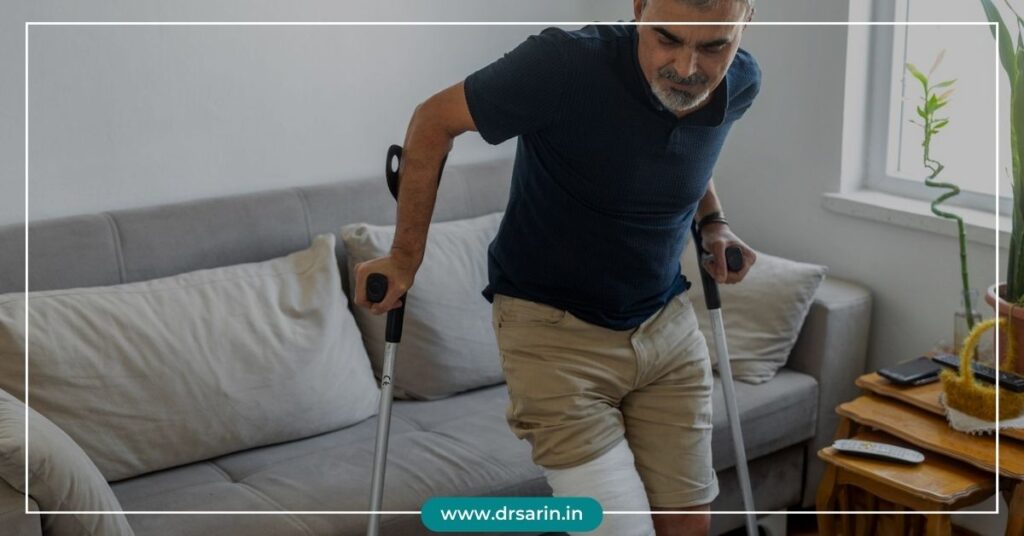
Returning to work and resuming daily life after limb-lengthening surgery can be gradual but rewarding. This transformative procedure, often pursued by individuals seeking to address limb length discrepancies or achieve greater height, requires patience, dedication, and a comprehensive approach to rehabilitation. Understanding what to expect post-surgery and how to navigate the recovery period is crucial for a successful transition back to normalcy. Immediately following limb-lengthening surgery, the focus lies on managing pain and ensuring the surgical site’s proper healing. Patients typically spend a few days in the hospital under medical supervision before transitioning to at-home care. During this initial phase, rest and adherence to the prescribed medication and physical therapy regimen are paramount. Physical therapy plays a pivotal role in restoring mobility and strength as the weeks progress. Rehabilitation exercises are tailored to each patient’s specific needs, aiming to improve flexibility, regain muscle strength, and promote optimal function of the lengthened limb. Gradually, patients are encouraged to bear weight on the operated limb, initially with assistance and then independently, as their strength increases. Returning to work after limb lengthening surgery is a milestone that demands thoughtful planning and consideration. The timeline for resuming work activities varies for each individual. It is influenced by factors such as the job’s nature, the surgery’s extent, and the progress made during rehabilitation. Sedentary jobs allow for a swifter return, whereas physically demanding roles necessitate a more extended recovery period. Communication with employers is crucial to facilitate a smooth transition back to work. Discussing any necessary accommodations or modifications to workload or tasks can help create a supportive work environment conducive to the individual’s recovery. Some individuals may immediately return to work, starting with reduced hours or modified duties to ease back into their professional responsibilities. Adapting to daily life post-surgery involves physical adjustments and psychological and emotional adaptation. Patience and self-compassion are essential as individuals navigate the challenges of relearning daily activities and adjusting to the changes in their bodies. It’s essential to follow the medical team’s post-operative care guidelines diligently. Attending follow-up appointments, adhering to the prescribed exercises, and maintaining a positive mindset are crucial aspects of the recovery journey. In conclusion, Returning to work and daily life after limb lengthening surgery requires patience, perseverance, and a holistic approach to rehabilitation. With the guidance of healthcare professionals, a supportive environment, and dedication to the recovery process, individuals can gradually reintegrate into their routines, reclaiming their mobility and embracing the newfound possibilities the surgery brings.
Why do surgeons use an external fixator for limb lengthening procedures?

Surgeons often use an external fixator for limb lengthening procedures due to its effectiveness in gradually and precisely lengthening bones. This device consists of external metal rods, screws, and pins that are surgically attached to the bone segments on either side of the intended lengthening site. One primary reason for using an external fixator is its ability to provide controlled and gradual distraction, allowing new bone formation to occur in the gap created. By making tiny adjustments to the fixator, surgeons can regulate the rate of bone distraction, minimizing complications and maximizing the body’s natural healing process. Another advantage is its versatility and adaptability. Surgeons can customize the fixator’s configuration to suit the patient’s needs and the targeted bone for lengthening. Additionally, the external nature of the fixator simplifies wound care and reduces the risk of infections compared to internal devices. The external fixator also permits early weight-bearing and mobility, promoting quicker recovery and rehabilitation for the patient. This aspect contributes significantly to a patient’s quality of life during the lengthening process. Overall, using an external fixator in limb lengthening surgery offers precise control, adaptability, reduced infection risk, and enhanced patient mobility, making it a preferred choice for many surgeons.
Reasons Why People Get Cosmetic Leg-Lengthening Surgery Done

In recent years, an intriguing trend has emerged in cosmetic procedures: leg-lengthening surgery. This groundbreaking procedure, offered by esteemed professionals like Dr. Sarin, has piqued the interest of individuals seeking to enhance their stature. Understanding the motivations behind this transformative surgery sheds light on why people undergo such a procedure. 1. Height Empowerment Height has long been associated with confidence and perceived social advantages. For some individuals, achieving a taller stature through leg-lengthening surgery serves as a means to enhance self-esteem and confidence. Dr. Sarin’s expertise in this field allows patients to address their insecurities and gain newfound confidence by altering their physical appearance. 2. Corrective Measures Beyond cosmetic aspirations, there are cases where individuals seek leg-lengthening surgery for corrective purposes. Congenital conditions, injuries, or leg length discrepancies often lead people to consider this surgical option. Dr. Sarin’s specialized approach caters to cosmetic enhancements and addresses medical concerns, ensuring comprehensive care for patients seeking corrective measures. 3. Professional and Social Advantages Height is sometimes associated with societal advantages, especially in certain professions or social settings. Some individuals opt for leg-lengthening surgery as they believe it can positively impact their career prospects or social interactions. Dr. Sarin’s expertise in understanding these nuanced motivations ensures that patients receive personalized consultations, acknowledging their unique aspirations and goals. 4. Psychological Well-Being The psychological impact of one’s appearance cannot be understated. For many, the decision to undergo leg-lengthening surgery is deeply rooted in their desire for psychological well-being. Dr. Sarin’s compassionate approach to guiding patients through this transformative journey encompasses physical, emotional, and mental aspects, ensuring a holistic experience. 5. Sarin’s Expertise In Leg-Lengthening Surgery Dr. Sarin stands at the forefront of this specialized field and is renowned for expertise, precision, and patient-centered care. His commitment to utilizing cutting-edge techniques and prioritizing patient safety has earned him a stellar reputation in cosmetic leg-lengthening surgery. The Importance of Informed Decisions Dr. Sarin’s practice prioritizes patient education and informed decision-making. He ensures that individuals considering leg-lengthening surgery are well-informed about the procedure, its potential risks, and the realistic outcomes. This approach empowers patients to make confident choices about their transformative journey. Conclusion The motivations driving individuals to pursue cosmetic limb lengthening surgery are multifaceted and deeply personal. Dr. Sarin’s expertise caters to the physical aspects of this procedure and acknowledges and supports the diverse motivations behind each patient’s decision. By offering personalized care, guidance, and expertise, Dr. Sarin continues to redefine the landscape of cosmetic leg-lengthening surgery, empowering individuals to embrace their desired transformations confidently.
Does Limb lengthening surgery have any downsides?

Limb lengthening surgery has gained popularity in recent years as a medical procedure that offers individuals the opportunity to enhance their height. While the desire for increased height is understandable, it’s essential to carefully consider both the advantages and potential downsides of such surgeries. On the positive side, limb lengthening surgery can be a life-changing procedure for individuals who struggle with issues related to stature. It’s particularly beneficial for those with conditions such as dwarfism or leg length discrepancies. The surgery involves carefully breaking the bone and gradually separating the segments to stimulate new bone growth. As a result, individuals can experience a noticeable increase in height. However, like any medical procedure, limb lengthening surgery is not without its drawbacks. One significant downside is the lengthy and challenging recovery process. Patients typically need to undergo a period of physical therapy and rehabilitation to regain mobility and strength. The process can be physically and emotionally demanding, requiring patience and perseverance. Another consideration is the potential for complications. While advancements in medical technology have reduced the risks, there is still a possibility of infections, nerve damage, or issues with the bone healing process. Additionally, the surgery is not always 100% effective, and the final height increase may vary from person to person. Financial considerations are also crucial. Limb lengthening surgery can be an expensive procedure, and it may not be covered by insurance in some cases. Prospective patients should carefully evaluate the cost, considering not only the surgery itself but also the associated expenses like post-operative care, rehabilitation, and follow-up appointments. Moreover, the psychological impact of limb lengthening surgery cannot be overlooked. The desire for increased height may be rooted in societal expectations and personal insecurities. It’s important for individuals considering this procedure to address the underlying reasons behind their decision and to have realistic expectations about the outcomes. In conclusion, limb lengthening surgery can be a viable option for those seeking to enhance their height, especially in cases where it addresses medical conditions. However, individuals should weigh the potential benefits against the challenges, including the demanding recovery process, potential complications, financial considerations, and the psychological impact of such a transformative procedure. As with any medical decision, individuals considering limb lengthening surgery should thoroughly weigh the benefits and potential drawbacks, consulting with Dr. Sarin to make an informed choice for their unique circumstances.
Limb Lengthening History
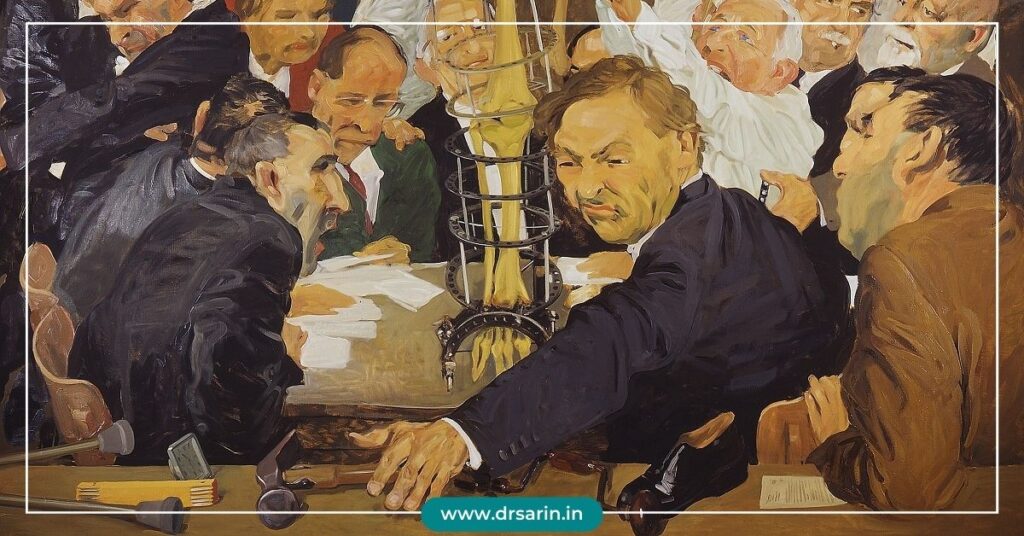
The history of limb lengthening is a fascinating journey through medical innovation, perseverance, and the quest for enhancing the quality of life for individuals with limb length discrepancies or deformities. Let’s delve into the evolution of limb lengthening techniques and the milestones that have shaped this field. Ancient Beginnings: The roots of limb lengthening can be traced back to ancient civilizations. Historical records suggest that as early as the 8th century, methods such as traction and stretching were used in attempts to correct limb deformities. These early practices laid the foundation for the concept of gradual lengthening. Gavriil Ilizarov’s Groundbreaking Work: A major breakthrough in limb lengthening came in the mid-20th century with the pioneering work of Russian orthopedic surgeon Gavriil Ilizarov. In the 1950s, Ilizarov developed the Ilizarov apparatus, an external fixator that allowed controlled, gradual lengthening of bones. This revolutionary device transformed the field of orthopedics and became a cornerstone in limb lengthening procedures. Mechanical Advances: Advancements in the mechanical aspects of limb lengthening continued to evolve over the years. The introduction of motorized distraction devices in the late 20th century marked a significant improvement in the precision and ease of lengthening procedures. These devices allowed for more controlled adjustments and reduced the physical burden on patients. Modern Surgical Techniques: In the 21st century, limb lengthening procedures have become more sophisticated with the advent of minimally invasive surgical techniques. Precise imaging technologies, such as computerized tomography (CT) scans and magnetic resonance imaging (MRI), enable surgeons to plan and execute procedures with unprecedented accuracy. Distraction Osteogenesis in Orthopedics: Limb lengthening predominantly relies on a process known as distraction osteogenesis. This technique involves making a controlled osteotomy (bone cut) and gradually separating the bone fragments, stimulating new bone formation in the gap. It has proven effective in addressing various conditions, including congenital limb deficiencies, post-traumatic deformities, and discrepancies in leg lengths. Cosmetic Limb Lengthening: Beyond addressing medical conditions, limb lengthening has gained popularity for cosmetic purposes. In recent years, individuals seeking to enhance their height have undergone elective cosmetic limb lengthening procedures. This controversial practice has sparked ethical debates but highlights the versatility of limb lengthening techniques. The history of limb lengthening is a testament to the resilience of medical professionals in the face of challenges and their commitment to improving the lives of patients. From ancient methods to modern surgical innovations, this journey reflects the ever-evolving nature of medical science and the pursuit of solutions to enhance mobility and well-being.

